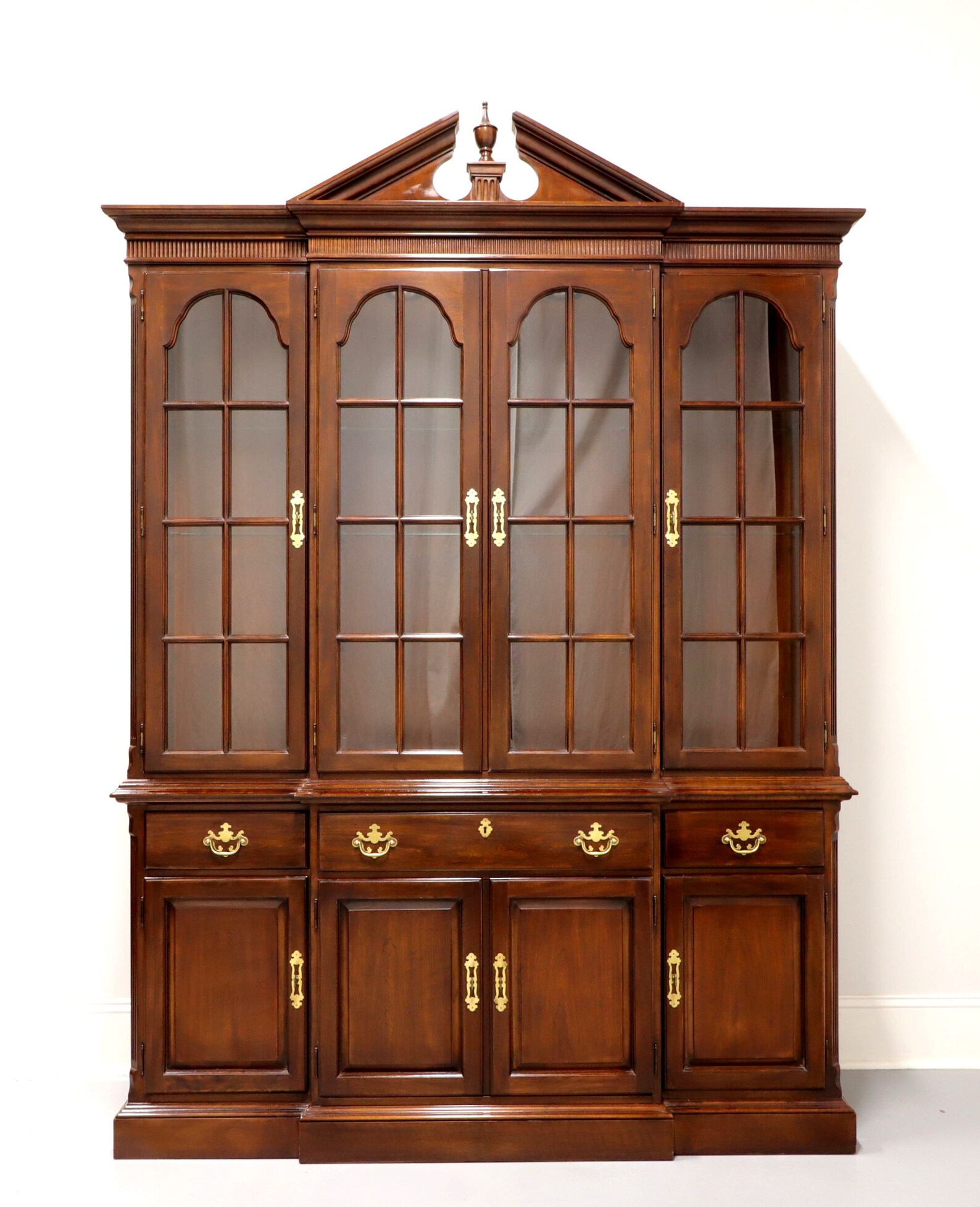
The first offerings from Drexel Furniture were simple: a bed, washstand and bureau all crafted from native oakwood, sold as a bedroom suite for $14.50. In 1903, in the small town of Drexel in the foothills of North Carolina’s Blue Ridge Mountains, six partners came together to found a company that would become one of the country’s leading furniture producers. While vintage Drexel Furniture dining tables, dressers and other pieces remain highly desirable for enthusiasts of mid-century modern design, the manufacturer's story actually begins decades before its celebrated postwar-era Declaration line took shape. This piece glows with the rich pantina of original finish, very good overall condition, very minor surface wear - ready for use in the room of your choice. Dimensions are 89" tall by 77" wide by 16" deep bottom is 38" tall and top is 51" tall. This is just a quality piece through and through. Below the drawers/desk are four banded front door with bookmatched richly grained veneer insets. The desk area features many cubbies and four drawers and a central door with gorgeous inlaid design.


The bottom section has four drawers and a central drop front secretary. The display area interior has adjustable wood framed glass shelves. This top section has four doors with bubble glass fronts and a split arch pediment. This cabinet has a fully lit top display section. This one is #33 out of an edition of 275. Each piece is numbered and the size of the edition is shown. The heirloom collection provided limited editions of Classic furniture. The range of vintage Drexel furniture for sale on 1stDibs includes end tables designed by Edward Wormley, walnut side tables designed by Kipp Stewart and lots more.An unusual knotty cherry china display cabinet made by Drexel Heritage Furniture as part of their Heirloom Collection.

In 2014, the last Drexel Heritage plant, in Morganton, North Carolina, reportedly closed its doors. Plywood-Champion Papers bought Drexel Enterprises in 1968, and it became Drexel Heritage Furnishings. In the following decades, contracts with government agencies, hotels, schools and hospitals brought its high-quality furniture to a global audience. Its acquisition of Southern Desk Company in 1960 bolstered its production of institutional furniture for dormitories, classrooms, churches and laboratories.
#Drexel heritage furniture breakfront series
By 1957, the company that had started with a factory of 50 workers had 2,300 employees and was selling its furniture nationwide.ĭrexel underwent a series of name changes in its long history. With the manufacturer’s success - spurred by its embrace of advertising in home and garden magazines - it opened more factories in both North and South Carolina.

It was then that the company began to expand, with several acquisitions of competitors in the 1950s, including Table Rock Furniture, the Heritage Furniture Co. It was managed by one of the original partners - Samuel Huffman - until 1935, at which time his son Robert O. In the 1970s, Drexel introduced high-end furniture in a Mediterranean style.ĭrexel changed hands and visions throughout the years. In the postwar era, Drexel embraced the clean lines of mid-century modernism with the Declaration collection designed by Stewart MacDougall and Kipp Stewart that featured elegant credenzas and more made in walnut and the Profile and Projection collections designed with sculptural shapes by John Van Koert. Always ready to adapt to new customer demands, during World War II, Drexel built a sturdy desk designed especially for General Douglas MacArthur. Others replicated the ornate details of 18th-century chinoiserie or the embellishments of Queen Anne furniture. This included making pieces inspired by historic European furniture, like the popular French provincial–style Touraine bedroom and dining group that borrowed its curves from Louis XV-era furniture. This focus on design, which few other furniture companies were committing to at the time, allowed Drexel to respond to a variety of new and traditional tastes. One of Drexel’s early innovations was to employ staff designers, something the company initiated in the 1930s.


 0 kommentar(er)
0 kommentar(er)
